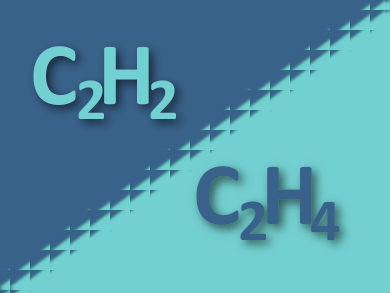Ethylene (C2H4) is commonly used in the chemical industry, e.g., to make polyethylene (PE). The alkene is produced via steam cracking and purified using distillation. However, this process leaves about 1 % acetylene (C2H2) impurities in the product. This acetylene can poison the catalysts used for ethylene polymerization and needs to be removed. Current methods for this suffer from high costs and low energy efficiency.
Tapas Kumar Maji and colleagues, Jawaharlal Nehru Centre for Advanced Scientific Research (JNCASR), Bangalore, India, have synthesized a metal-organic framework (MOF) that can separate acetylene from a mixture of C2H2 and C2H4. The team prepared the Mn(II)/Mn(III)-based MOF {[Mn3(bipy)3(H2O)4][Mn(CN)6]2·2 (bipy)·4 H2O}n (bipy = 2,2′-bipyridine) by combining solutions of K3[Mn(CN)6] in water and bipy in ethanol and layering this mixture with an aquoeus solution of MnCl2·6 H2O.
The resulting MOF crystallizes in the Pbam space group and is composed of 2D sheets of manganese complexes connected by bipy pillars. This structure has one-dimensional channels, which are occupied with water and bipy molecules after synthesis. Heating the material can remove those guest molecules. The resulting framework after the removal of guest molecules selectively captures C2H2 and can successfully separate C2H2/C2H4 mixtures with an acetylene content of 1 vol%. The researchers attribute this selectivity to the strong binding of C2H2 to the MOF’s pore surfaces and its high affinity to the metal centers.
- Separation/Purification of Ethylene from Acetylene/Ethylene Mixture in a Pillared-layer Porous Metal-Organic Framework,
Arpan Hazra, Saibal Jana, Satyanarayana Bonakala, Sundaram Balasubramanian, Tapas Kumar Maji,
Chem. Commun. 2017.
DOI: 10.1039/c7cc00726d



